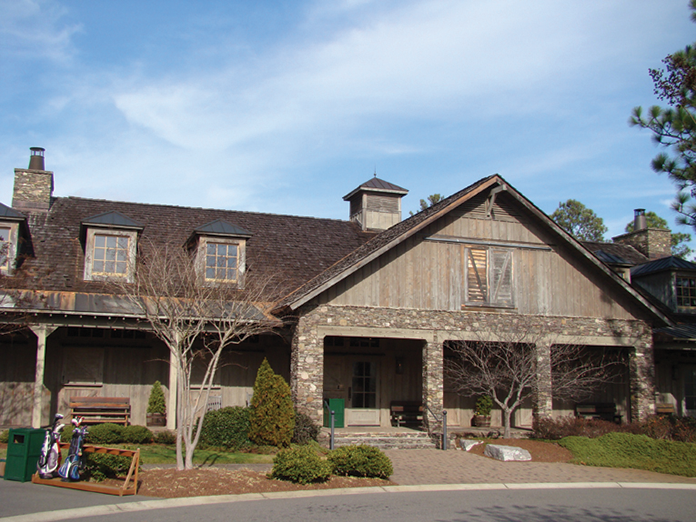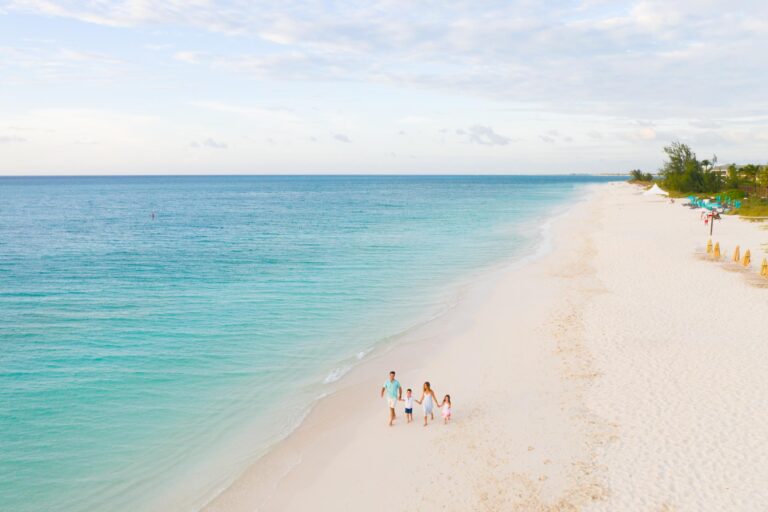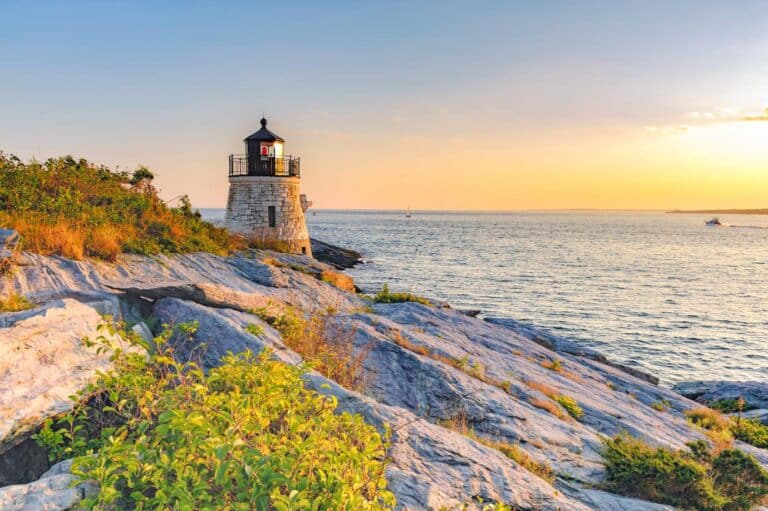From major championship venues to hidden gems, a host of great golf courses await travelers in Pinehurst, North Carolina.
Next June, the eyes of the golf world will be on Pinehurst Resort as it prepares for an unprecedented feat in modern championship history — No. 2’s hosting of both the men’s and women’s U.S. Opens in back-to-back weeks. The USGA couldn’t have picked a better venue for this doubleheader, for if there’s an American equivalent to St. Andrews — a place of pilgrimage, a spiritual home of golf in this country — it surely must be Pinehurst. With Donald Ross’s masterpiece rounding into fine form, now is a perfect time to plan a visit.
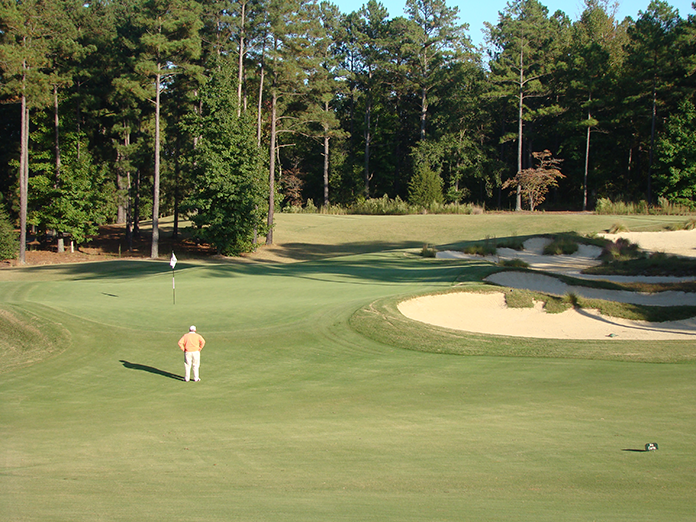
This hamlet in the Sandhills of North Carolina has been a magnet for link lovers since 1895, when Boston soda fountain magnate James Tufts commissioned Frederick Law Olmsted’s landscape architecture firm to design the town from scratch. The idea was to get people outside to enjoy the temperate climate through a variety of sporting pursuits. Golf, then in its infancy in America, was central to that vision. Tufts’ next masterstroke was hiring young Scottish professional Donald Ross to lay out Pinehurst’s first golf courses. Ross would go on to become one of the most revered golf architects of all time, but his home was always in the Sandhills, and Pinehurst No. 2 (greens fees: $370-$430), the course he tinkered with throughout his life, was his obsession.
Our visit to No. 2 this spring showed that Bill Coore and Ben Crenshaw’s restoration work has really begun to settle into the natural landscape. That project, completed in March of 2011, transformed the golf course in terms of both aesthetics and playability, as the former Masters champion and his partner replaced acres of thick Bermuda rough with artful sweeps of sand and wire grass.Drawing upon archival photography from the 1940s and ’50s, the architects sought to recapture the spirit of No. 2 when it looked and played its very best. (The fact that the restoration made No. 2 much more environmentally sustainable was a welcome side benefit.) Coore and Crenshaw didn’t alter any of the course’s infamous tortoiseshell greens, though. These hard-to-hold putting surfaces remain the essence of No. 2’s challenge, and a source of great vexation for pros and amateurs alike.
It could safely be said that Pinehurst as we know it wouldn’t exist without No. 2 — it’s the alpha and omega of every visitor’s itinerary — but there’s a lot of quality golf elsewhere in the Sandhills. For example, the twin resorts of Pine Needles and Mid Pines (greens fees: $75-$235) are minutes down the road, and offer a pleasing, mom-and-pop contrast to the smooth, factory-like efficiency of Pinehurst Resort. These properties are owned by Peggy Kirk Bell, an icon in women’s golf. A member of the 1950 Curtis Cup team, Bell was instrumental in the founding of the LPGA Tour. After her competitive days, she embarked on a long, hall of fame career as an instructor. At age 91, Bell isn’t too active on the range anymore, but her daughters and sons-in-law (one of them is former PGA Tour player Pat McGowan), carry on her legacy. The Golfari academy at Pine Needles and Mid Pines is among the best in the country for neophytes and is especially renowned for its programs for women.
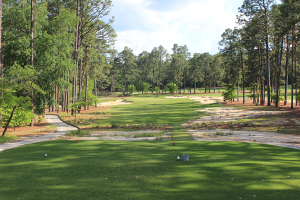
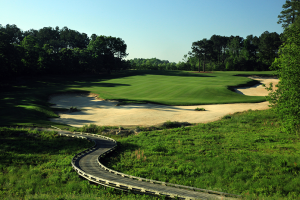
Another Bell son-in-law, Kelly Miller, serves as the president of the resorts. Miller paid close attention to the work unfolding on No. 2 and came into contact with Kyle Franz, a member of Coore and Crenshaw’s construction team. Just 32 years old, Franz has a strong résumé as a shaper, from the famed Pacific Dunes in Oregon to the Prairie Club in Nebraska. He successfully convinced Miller to let him give Mid Pines something like the No. 2 treatment, and landed his first job as a lead architect. The work concluded this summer, and there’s no question Franz delivered. Visiting golfers will immediately notice the beautiful sandscapes, speckled with wire grass and other native flora that Franz restored to the layout. The architect rebuilt every bunker, and reclaimed areas of the putting greens that had been lost over decades of normal maintenance. Situated on a much more undulating piece of property than No. 2, the views from the first and 16th tees are worth the price of admission on their own. Mid Pines was always a good course, but it now positively crackles with new life. It should not be missed.
The restoration of Pinehurst No. 2 may not have happened had it not been for the Dormie Club (greens fees: $75-$215), the project that brought Coore and Crenshaw to the Sandhills in the first place. Located just north of the village, Dormie had the misfortune of entering its construction phase precisely as the economy cratered in 2008. Planned as a high-end, national private club, it went on a mind-numbing odyssey of ownership changes and reworked business models, finally settling in (at least for now) as a public facility.
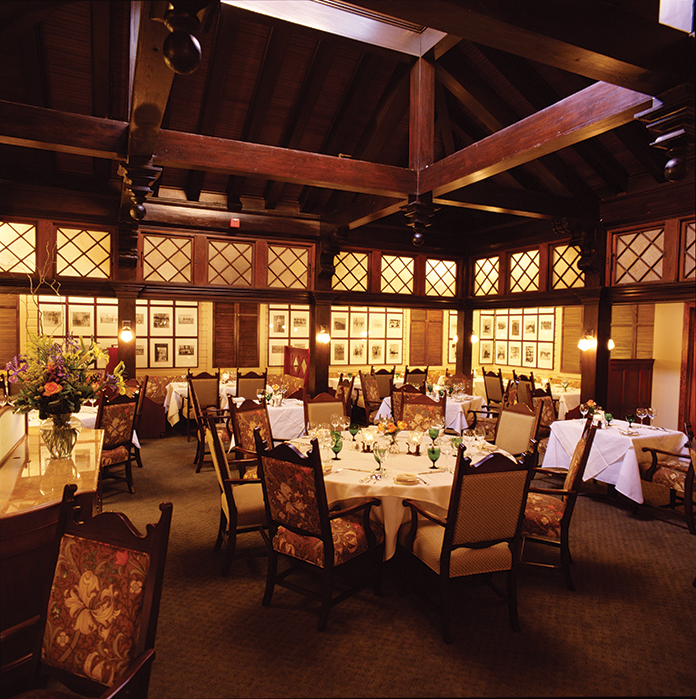
By Pinehurst standards, the Dormie Club is golf on a grand scale. Where the routings of the area’s older courses have a feeling of intimacy, Dormie plays big, sprawling across a 307-acre site. (Pinehurst No. 2, by way of comparison, is a shade under 200 acres.) The playing corridors are broad, the views are unsullied by anything that isn’t golf and the ever-changing topography is exciting to explore. Coore and Crenshaw, as they so often do, found a variety of holes on the site. There are charmers like the temptingly drivable par-four 14th, hair-raising marshland carries at the 7th and 15th and good, old-fashioned bruisers like the par-five 17th, where after the drive the player must decide whether to lay up or attempt to conquer a sandy wasteland bisecting the fairway. Coming off the final green, it’s hard not to think that if Dormie’s timing had been just a little better this course would have been the province of a fortunate few.
in keeping with its reputation as “the American St. Andrews,” Pinehurst is first and foremost a public golf destination. One stand-out exception is Forest Creek Golf Club. An exclusive private retreat, the club dates to 1996, when founder Terry Brown unveiled the first of two Tom Fazio-designed 18s on 1,200 acres of rolling sandhills. Each course has its own personality, providing distinctive playing experiences. The original course, the South, is what one might call “classic Fazio” — the fairways bend gracefully, bunkers are clean-edged and the vistas are perfectly framed. One highlight is the par-five third, a short par-five that makes great use of uphill terrain, tempting golfers to take two mighty swings in search of an eagle putt. The newer North course features expansive and rugged sand pits that at times call to mind the infamous “Hell’s Half Acre” at Pine Valley. The routing explores the property in a compelling fashion, moving from hilly woodland corridors to a wide-open lakeside environment. Fazio used the water to fine effect on the par-four 17th, which calls for a (manageable) drive across a corner of the lake and then a (nerve-wracking) approach to a green jutting out into the same hazard.
Off-course amenities leave nothing to be desired, from the expansive manor-style clubhouse to the killer practice facility to the unbelievable men’s locker room, a huge and luxurious barn of a building that’s surely one of the great hangouts in golf. Here, a visitor might luck into a Michael Jordan sighting — No. 23 is a member. On the day of our visit we had to “settle” for Carolina Tar Heel basketball coach Roy Williams, an encounter that left us plenty star-struck in its own right. Needless to say, a day at Forest Creek is an experience that’s worth tapping deep into one’s golf network or, if you’re a private club member, asking your professional to make a discreet inquiry. And the affluent (and serious) golfer in search of a Pinehurst pied-à-terre would do well to give the place a close look.
The perfect place to finish a trip to the home of American golf is Tobacco Road Golf Club (greens fees: $49-$134) in Sanford, conveniently located midway between Pinehurst and Raleigh-Durham Airport. “The Road,” as it’s sometimes called, is one of the finest examples of the work of Mike Strantz, who died in 2005 at the far-too-young age of 50. Strantz was the most fearless architect of his generation, designing courses that look like something out of a video game, yet play beautifully in real life.
This fantastical quality is obvious at Tobacco Road from the word “go,” as the very first tee shot demands that players split the gap between (or fly over) a pair of towering sand dunes. Down in the fairway, the curtain parts and golfers enter a surreal landscape of vast bunkers, topsy-turvy landforms and sliver-like greens hidden in the unlikeliest of places. The obstacles are often daunting, blind shots abound, and it takes a great deal of ball control (and, without question, some local knowledge) to not get swallowed up by the course at some point. But The Road can also yield plenty of birdies. Not everyone will love it, but one thing’s for sure: A round here is never boring. Whether it’s trying to fly over a desert to drive the tempting green of the short par-four 5th, or putting up the face of what looks like a cresting wave (the par-three 7th), Strantz has given golfers the chance to play shots they simply don’t see every day. No matter the result, you just have to laugh at the imagination at work. Like Donald Ross, Tom Fazio and Coore and Crenshaw, it seems that Strantz’s genius was drawn out by this charmed corner of the golf world — the Carolina Sandhills.
Thomas Dunne is a freelance writer whose work regularly appears in Departures, LINKS and The Met Golfer, among other publications. He lives with his family in Mamaroneck, NY.
Featured Courses
Pinehurst No. 2
855-235-8507, pinehurst.com
Pine Needles
910-692-7111, pineneedles-midpines.com
Mid Pines
910-692-2114, pineneedles-midpines.com
Dormie Club
910-215-4587, dormieclub.com
Forest Creek Golf Club
910-295-9000, forestcreekgolfclub.com
Tobacco Road Golf Club
877-284-3762, tobaccoroadgolf.com
Not Golf – But Not to be Missed in Pinehurst, NC:
1. Carolina Horse Park: The 250-acre venue hosts equestrian events, dog shows, festivals and more.
2. The Carolina: This century-old hotel in Pinehurst Resort is steps from one of the area’s best spas. With a Southern feel and rocking chairs on the porch, it’s perfect for cocktails.
3. The 1895 Grille: Located at The Holly Inn, don’t miss their triple chocolate soufflé!
4. Elliotts on Linden: Enjoy locally sourced, farm-fresh lunch and dinner.
5. Ironwood: American cuisine with Southern flavor served in the heart of historic Pinehurst.
6. The Pik ’N’ Pig: Enjoy finger-licking, slow-cooked BBQ while you watch vintage planes on the runway at the Gilliam-McConnell Airfield.
7. Pine Crest Inn: This village favorite boasts great golf, a friendly staff and the famous Mr. B’s piano bar, perfect for aprés golf drinks.
8. Pinehurst Track Restaurant: Eat low-key, delicious fare (lunch and breakfast only), and watch horses practice harness racing. 910-295-2597
Photo Credits:
Courtesy of Pinehurst, LLC
Courtesy of GolfClubAtlas.com
Chip Henderson
Thomas Dunne
Courtesy of 1895 Grille
Pinehurst No. 2: Courtesy of Pinehurst, LLC
Dormie Club by Evan Shiller
